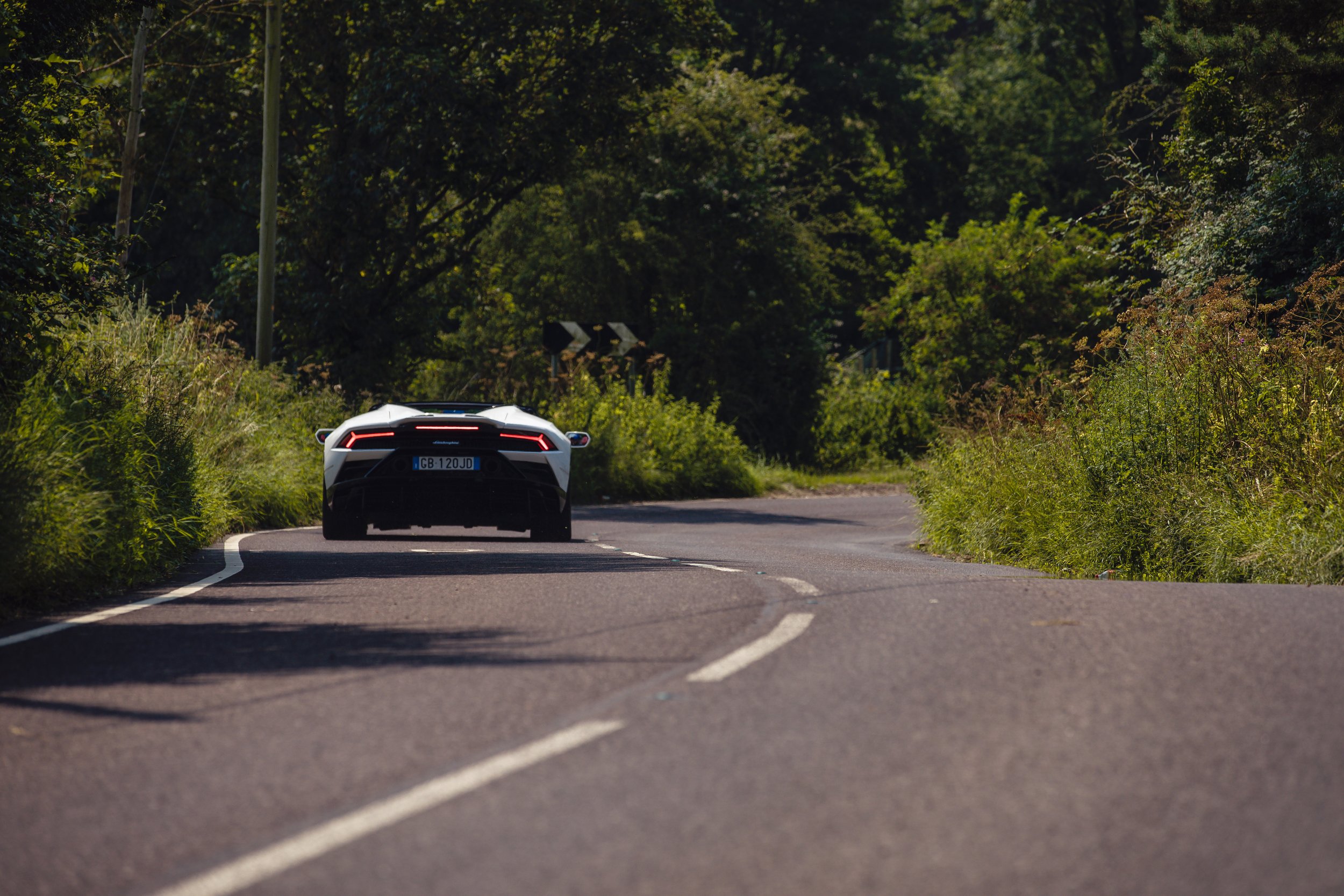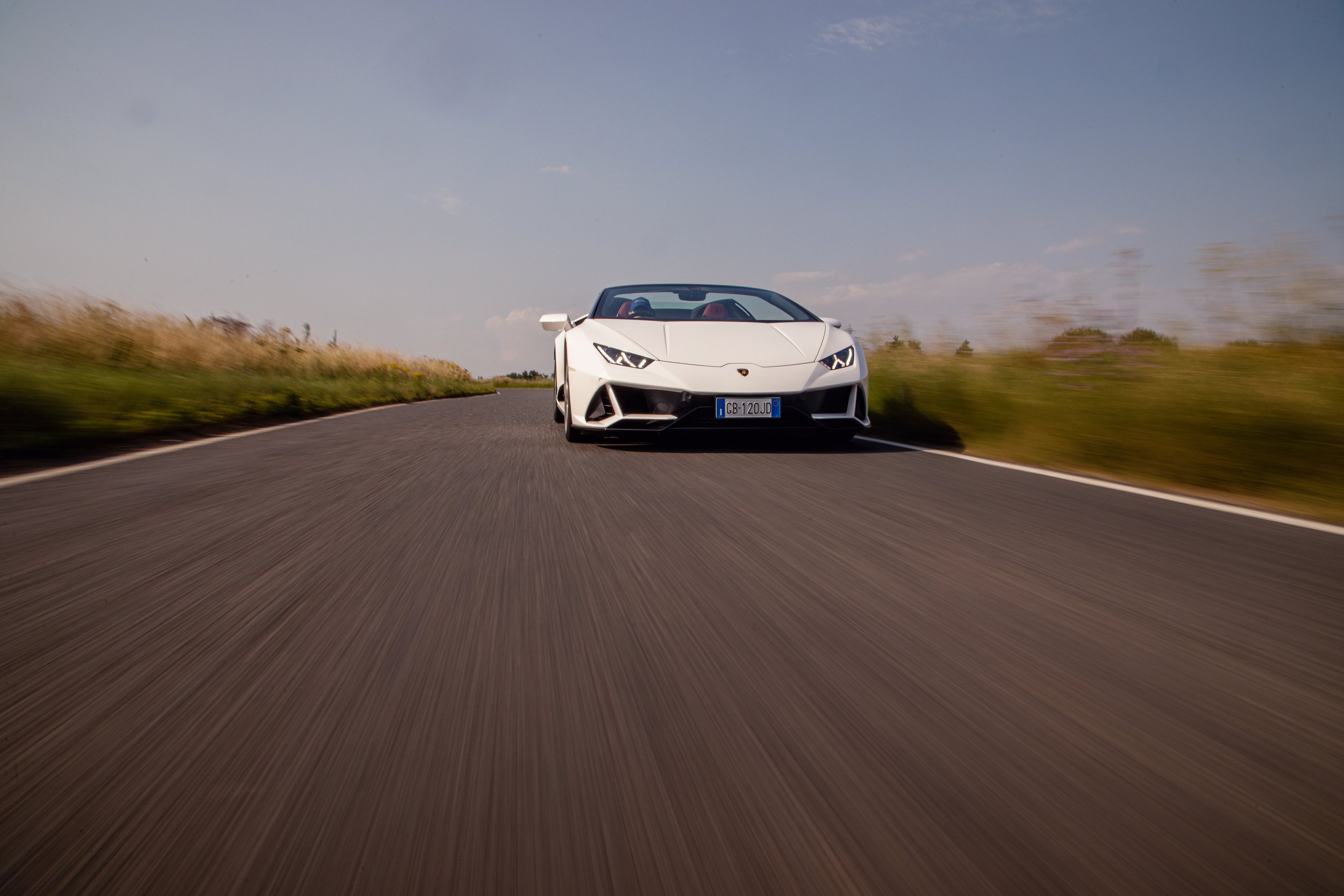
Road Test: Lamborghini Huracán Evo Spyder
With a folding roof, the Lamborghini Huracán Evo Spyder offers the best way to enjoy the glory of the V10 engine. Time for a road test.
WORDS: Mark Rose | PHOTOS: Dom Ginn
Of all the variants of Audi R8 and Lamborghini Huracán Evo, the convertible Lambo is the one that truly celebrates the naturally aspirated V10 engine. Here, it pushes the boundary between being socially acceptable for the public road but vocal enough for real GT racing. Rev it from idle and it barks, lift off the throttle while moving and the exhaust pops and bangs, wring the neck out the motor and it screams. The Huracán seems intent on doing one thing, and that’s making noise, or music to you and I.
Of course, there’s more to it than big sound. This is a very different car to the equivalent Ferrari or McLaren. It’s less dynamic, more dramatic. It might even be a better supercar for it, depending on how you judge these things. If you think supercars should be theatrical then the Lambo makes a strong case for itself. It turns heads, makes grown men point furiously like ten-year-old boys, and leaves you inundated with young Mums asking for pictures of the car with their children. If you’re the shy and retiring type, you best steer clear of this one.
Despite the bravado, the Huracán Spyder is actually a docile thing to drive. The three driving modes are named Strada, Sport, and Corsa (Street, Sport, and Race in English), and offer the Lambo something of a dual personality. In Strada with the gearbox in auto, you can roll around in relative comfort without hacking off the neighbours. The engine is a bit throaty when you first fire it up, but it quickly simmers down and you can navigate through your home town without causing too much of a stir. The suspension is also compliant and the nose-lift system – this is a must have option – spares the front splitter from the worst that speed bumps and raised tarmac can throw at it.
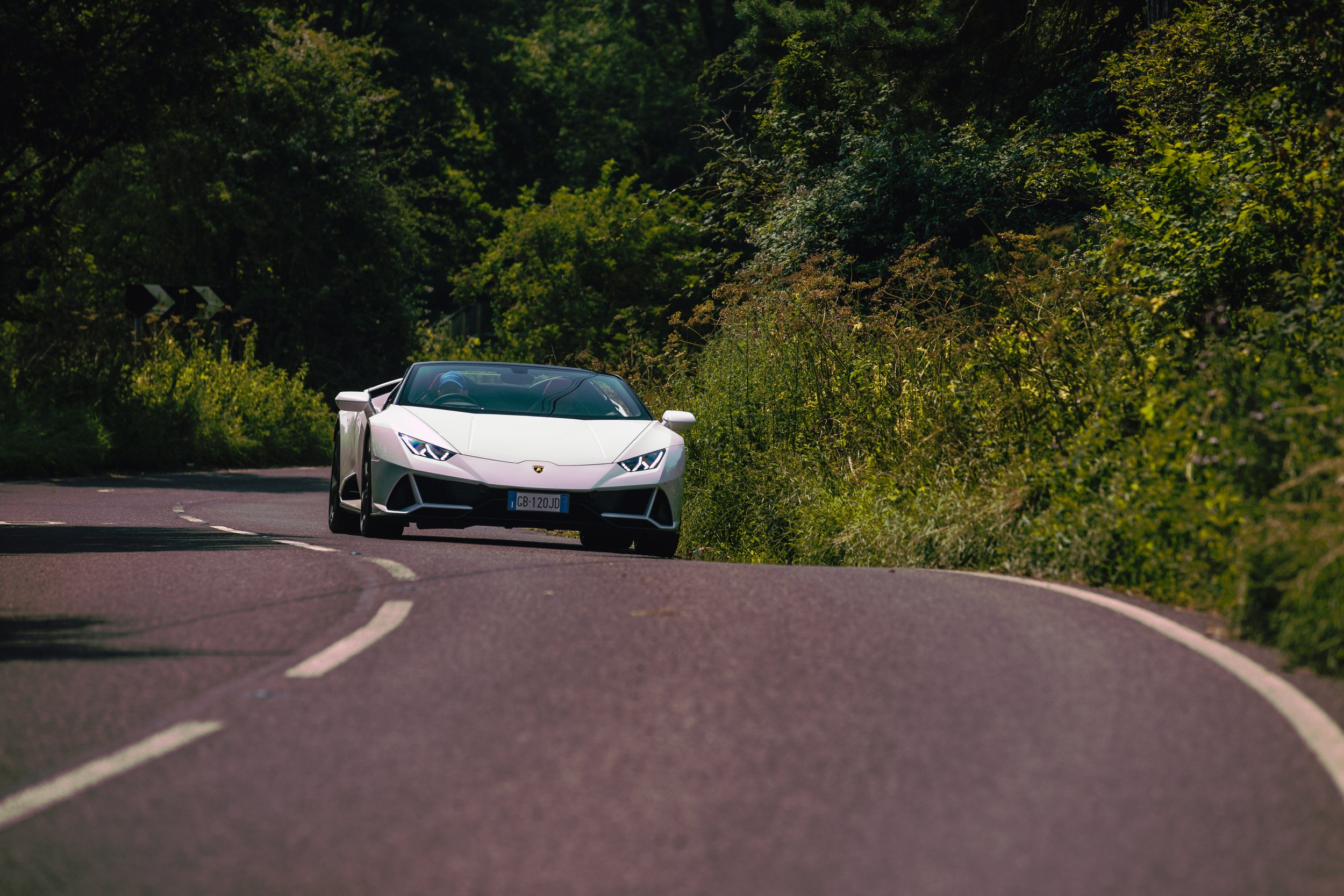

Sport and Corsa are interesting because the former driving mode offers enough of a step change from Strada to make you think twice about having to opt for the hardcore Corsa setting. What impresses most is how quickly you settle in to a rhythm once you’ve found a twisty and undulating piece of road. The Huracán is not a supercar that you feel the need to hustle. While a Ferrari F8 is a livelier proposition and a McLaren 720S is a precision tool, the Lambo has a point-and-squirt feel to it. Rock up to a corner on the brakes, bleed off, turn the wheel, feel the chassis roll a touch, use the abundant grip to see you through the corner, and then get back on the power for a killer exit. The all-wheel drive system gives you seamless traction as you leave the corner and means you’re not left managing any snap oversteer. The steering, despite being devoid of feedback is well weighted and allows you to place the car confidently, and when you find a series of left to right corners the car changes direction with immediacy despite carrying a dry weight of 1,542kg. This sense of agility is mainly down to the rear-wheel steering which helps rotate the car in to the corner, but this isn’t a car that you can trail brake in. Do that, and the weight of the V10 engine behind you will just force the Lambo in to understeer. If you happen to find yourself carrying too much speed on the approach to a corner – easily done with so much straight line performance – then you can be confident that the vast carbon ceramic brakes will bail you out of trouble.
Speaking of speed, the Huracán has it in abundance but asks you to work for it. We all know the score. Nestled in the middle of the chassis is a now seemingly otherworldly, naturally aspirated 5.2 litre V10 engine. I say otherworldly because this power unit truly is a dying breed. Car makers and the media have been banging on about the subject matter for years now, but you get the feeling that this really is the V10 motor’s swan song. If we’re lucky, we might get it for one more generation of supercar, perhaps with some plug-in hybrid tech, but there’s every possibility it will die with the current Huracán and Audi R8. Wipes tears from eyes.
But while it’s here, we must appreciate the performance it offers. Outputs of 631bhp and 443lb ft are good for zero to 62mph in 3.1 seconds and a top speed of 202mph. But with peak power at 8,000rpm and torque available from 6,500rpm, it’s the way the Lamborghini propels you down the road that sets it apart from its competitors. It’s not supersonic like a 720S or an F8, but it’s the most rewarding of the three engines because it requires you to hang on to the gears so you can extract every last piece of performance from it. It crescendos in a way that turbocharged engines simply don’t, and to many, that’s what a true supercar is all about.
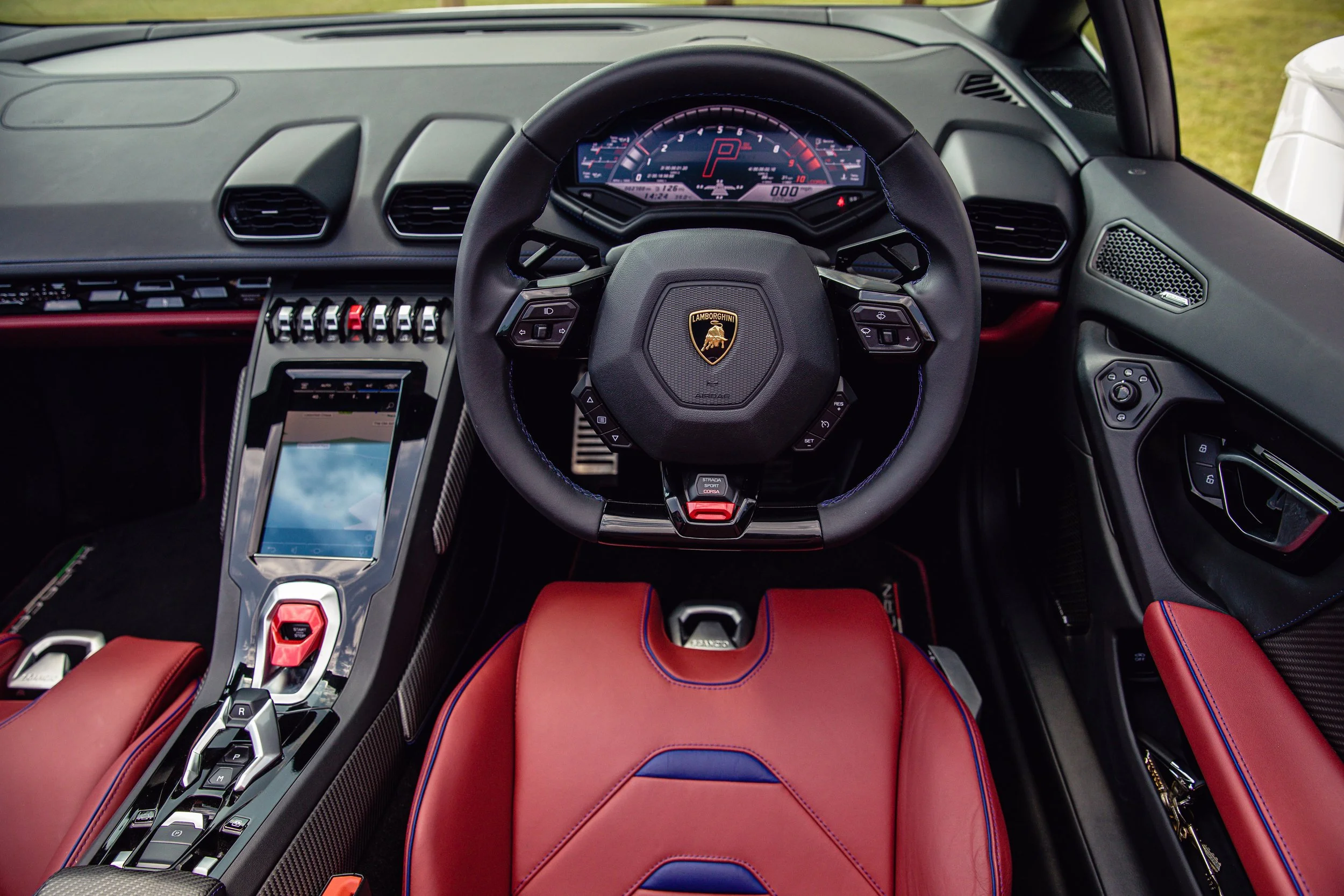

Power is fed to all four wheels via a seven-speed twin-clutch transmission. The gear changes are super snappy in the Sport and Corsa driving modes, and the large column-mounted paddles are a delight to use. For daily use, it’s not the most refined gearbox but it’s more than adequate and once you’re up to speed it will smoothly shift up and down the ratios. Also, this is a far more manageable car than its rear-wheel drive sibling. Whilst the RWD model can be spikey if you get too trigger happy with the throttle, this all-wheel drive variant is far better behaved. However, we still think the RWD is the more exciting and engaging car in the range.
The spec on our press demonstrator was interesting with its Bianco Asopo paint– that’s white to you and me – red fabric roof and blue brake callipers. The red and blue theme also continued in to the cabin with the seats, lower dash and door inserts. Not my favourite colour scheme, but these things are subjective. The actual cabin is, err, cramped. I never thought I’d say this, but I’ve found an upside to being 5ft8. The upside is that I fit in the Huracán with no issues, but anyone a few inches taller than me began to struggle and at 6ft3, our lead photographer Dom had to be shoehorned in and out the car. The problem is the rear firewall that sits too far forward and prevents you from pushing the seat far enough back to assist with leg room. With the roof up, you need to be signed off for working in confined spaces before stepping in the car. But supercars are not supposed to be easy to live with, so let’s consider the lack of space and inability to see your rear three-quarter blind spot as a sign of character. The interior is however, well made, and the cabin doesn’t suffer from excessive wind bluster when the roof is down. Additionally, if the weather is a little colder, you can drop the rear window independently of the roof to help pump pure V10 scream in to the cabin while on the move. The roof can also be folded away in just 17 seconds while doing speeds of up to 31mph, because apparently just driving a Lamborghini isn’t flashy enough.
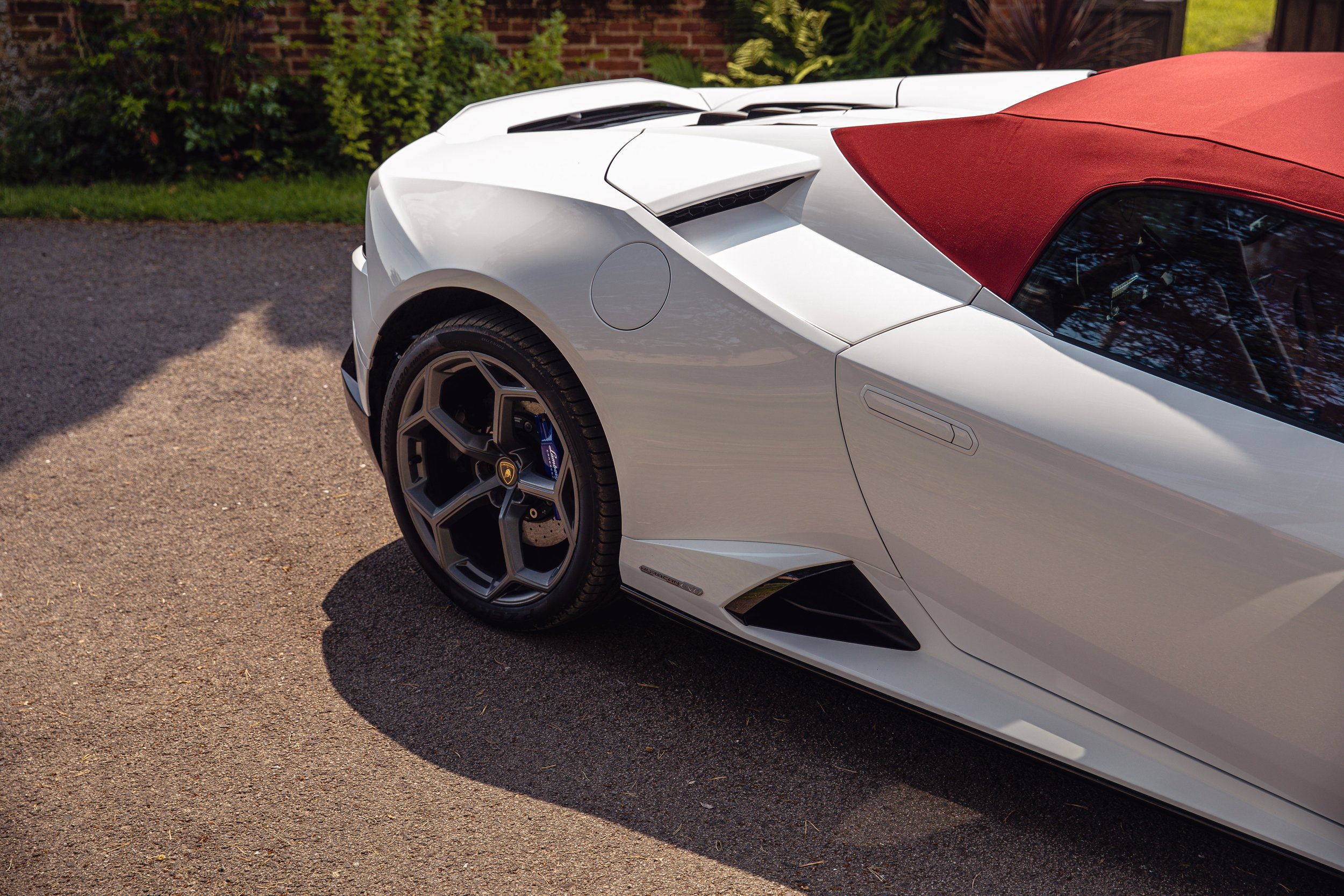
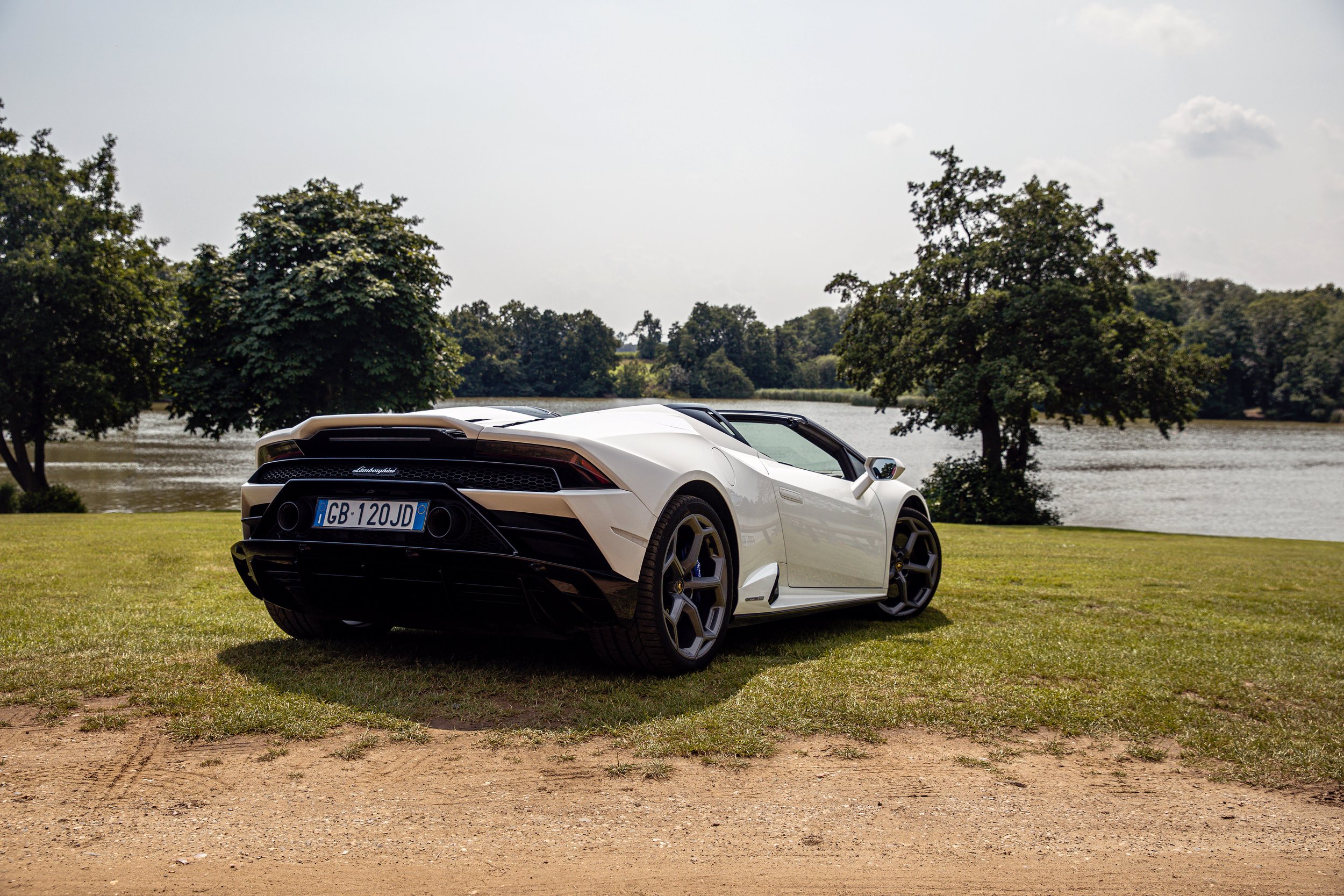
Like every great Italian afterthought, the infotainment and its usability are passable but some more physical buttons would have been welcome. Real highlights include the fighter-jet style cover for the engine start button and the ginormous column mounted gearshift paddles which are infinitely superior to the stubby, wheel mounted affairs found on other performance vehicles. Yes, we’re looking at you, Audi R8. There are some annoyances to the cabin, but in some respects, it adds to the theatre and when you get stuck in to the driving, you quickly forget about its shortcomings. Anyhow, you shouldn’t be driving it regularly enough to care, because to use it every day would quickly detract from the sense of occasion. Driving a Lamborghini should always be an event and something to look forward to.
Unfortunately, and this is no fault of the car, the Huracán Evo feels like a dying breed. It seems like every new car going on sale is either electric or some kind of plug-in hybrid, and supercars are now moving in the same direction. It’s a shame because there is still a huge appetite for internal combustion, but engines like the V10 are being legislated out of existence. It’s sad because the Lamborghini Huracán Evo Spyder is the definition of supercar – from the appearance, to the performance, to the sheer aural delights when you find a straight piece of road and let the V10 engine scream. It’s unashamedly old school, but a better supercar for it.
It costs £218,000 before options and our test car came in at just over £275,000. Buy one and hang on to it, because when the V10 engine dies, being able to pull a Huracán Evo Spyder out the garage for a drive will become an experience you can no longer apportion a value to.
Technical Specifications
Engine: V610, naturally aspirated
Displacement: 5,204cc
Power: 631bhp @ 8000rpm
Torque: 443lb ft @ 6,500rpm
Transmission: 7-speed twin-clutch, AWD
0-62mph: 3.1 secs
VMAX: 202mph
Kerbweight: 1,542kg
Price: £218,000+ (when new)
“The Huracán seems intent on doing one thing, and that’s making noise, or music to you and I”
8/10
Rating
